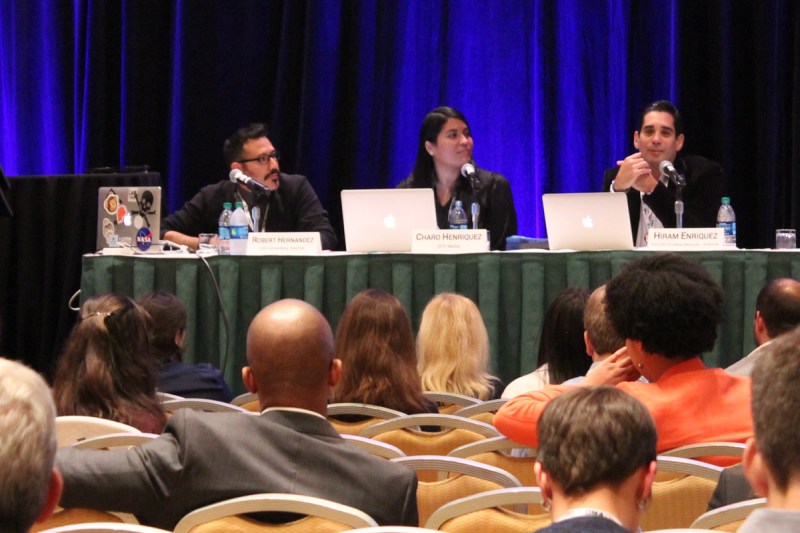To reach the largest and fastest-growing minority group in the United States, journalists must focus on digital innovation.
The 52 million Latinos in the United States make up about 17 percent of the population in the United States, according to a 2011 Pew Research Center study.
They send more text messages per month (an average of 941), watch more video on the internet and buy more movie tickets than any other ethnic or racial group, said panelists at the “Understanding the Latino Boom” session at the Online News Association conference on Oct. 18.
“If you want to reach Latinos, you need to innovate in the digital arena,” said panelist Hiram Enriquez, director of digital product innovation for VIACOM Americas.
Leading a newsroom to reach a Latino audience is a challenge, said David Farre, director of digital operations at The Patriot-News in central Pennsylvania, who attended the session. “They’re underrepresented and segregated,” he said. “There’s a lot of Spanish-speaking media. There’s not a lot of crossover.”
Latinos are highly diverse within their ethnic group. The top five Latino backgrounds in the United States are Mexican, Puerto Rican, Salvadoran, Cuban and Dominican.
“We wanted to illustrate the diversity in not only our language but culture,” said panelist Charo Henriquez, GFR Media innovation editor. GFR publishes El Nuevo Dia, the largest-circulation Hispanic newspaper in the U.S.
When devising a strategy to reach their Latino audience, journalists should examine how many Latino reporters are on staff and how often the newsroom covers topics that affect the Latino community, Enriquez said. It’s not necessarily about whether the coverage is in English.
Eighty-two percent of U.S. Hispanics consume some news in English, according to the Pew Hispanic Center. Of that, 32 percent get their news exclusively in English, up from 22 percent in 2006.
“Our job is to give voice to the voiceless, and Latinos are not waiting,” said panelist Robert Hernandez of the University of Southern California Annenberg School for Communication and Journalism.
Social media is filling the gap that mainstream journalism isn’t, Hernandez said. Eighty percent of Hispanic adults use social media, and 56 percent consume news media from the internet on a typical weekday, the panelists said.
“The Hispanics are going mobile. We’re not just saying ‘mobile-first’ in the sites we’re building. We’re talking about the content, too,” Henriquez said.
On mobile, people don’t have to go looking for the information, Henriquez said. Instead, the news finds its way to them through social media channels. Representation is more important than the language or subject of an article to help engage this audience, Henriquez said.
“I don’t think it’s one specific type of content. It’s being more represented,” she said.
Amethyst Holmes, a reporter with The Huntsville (Ala.) Times, said representing the growing Latino minority population is something her newsroom struggles with.
“Anything we can learn about underrepresented communities brings us closer to cohesive and whole reporting, which is something we all have an aspiration to do when we get in this business,” she said.
Source:
Mobile phone spyware programs generally require a spyware to be installed in www.besttrackingapps.com/teensafe/ the phone that is to be monitored






